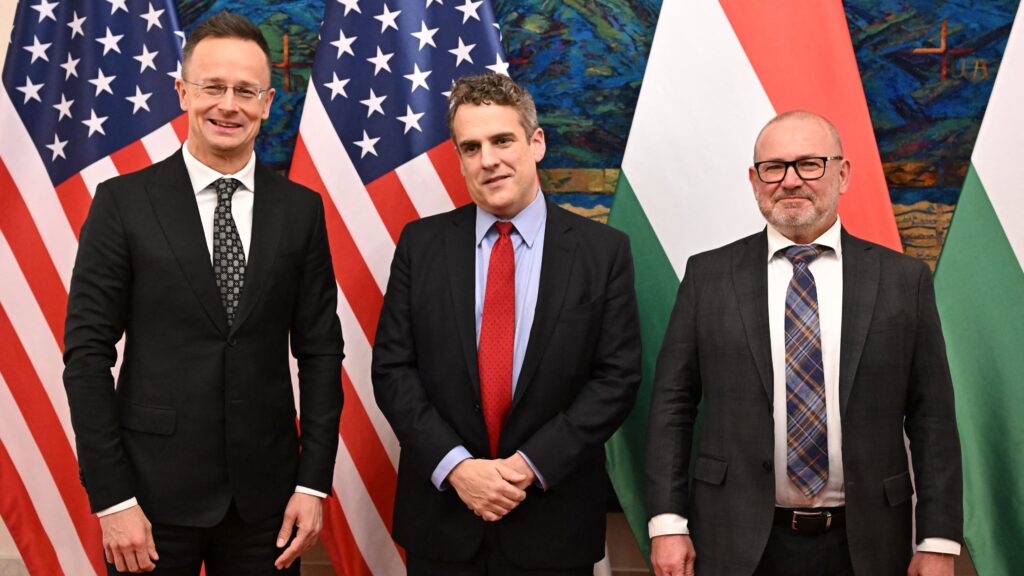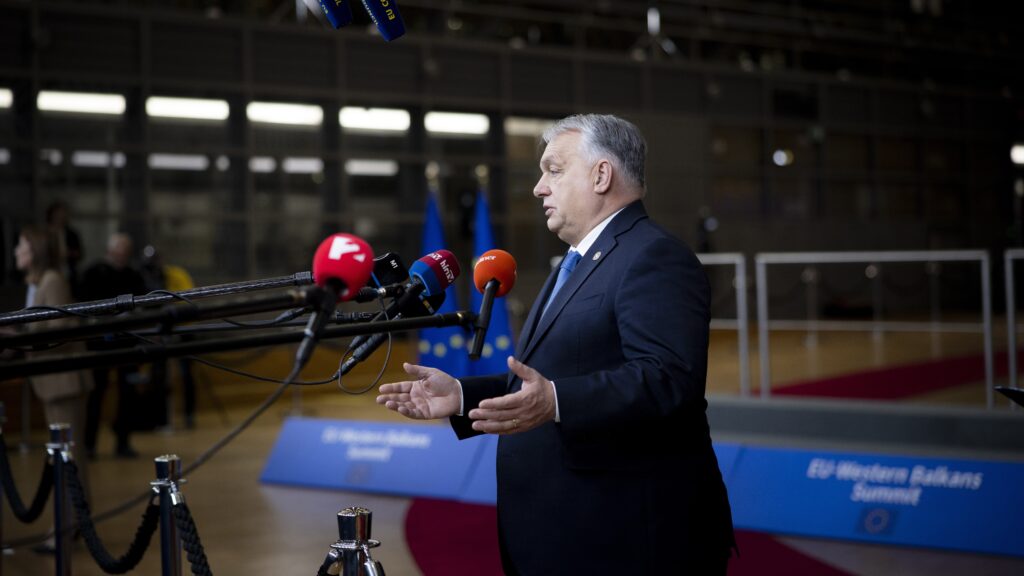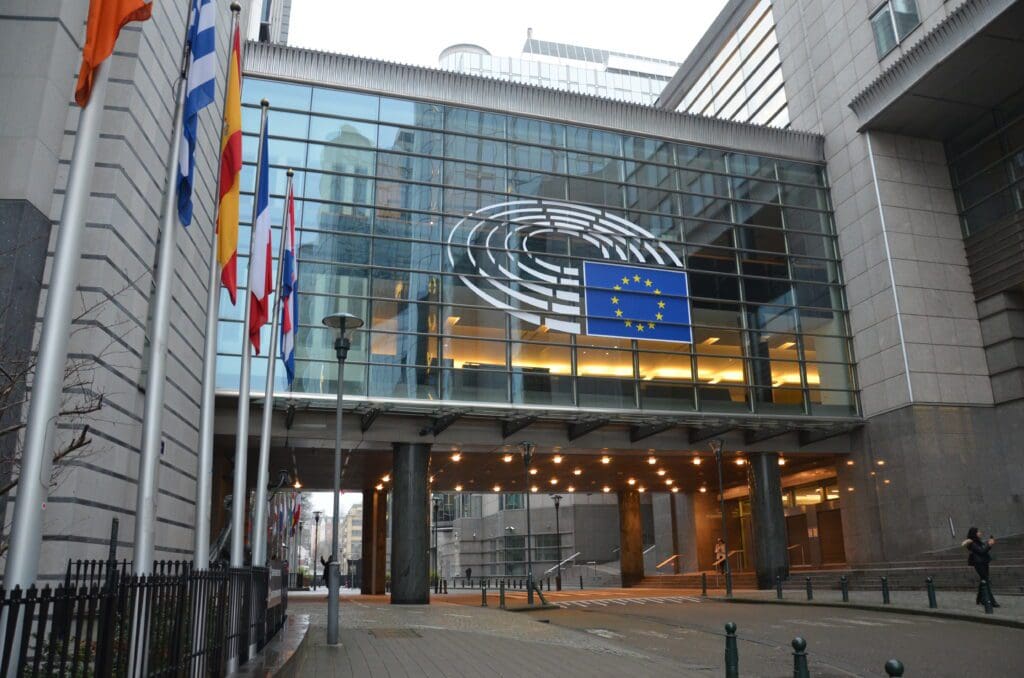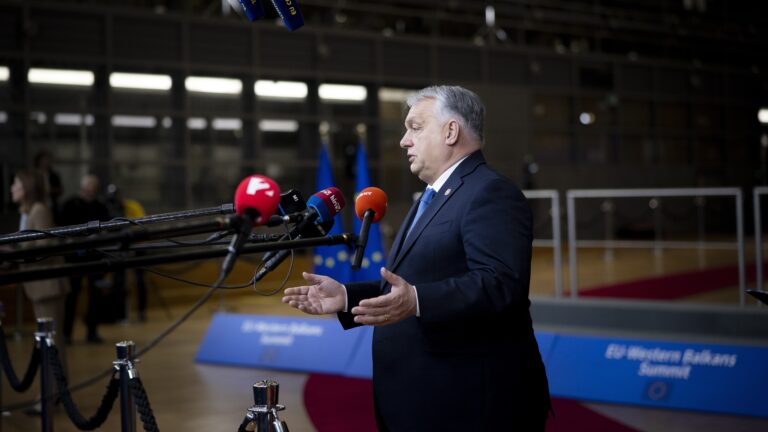This article was published in our print edition’s Special Issue on the European Union.
Although the challenges of irregular migration have preoccupied the minds of European decision-makers and the wider public for almost a decade, the EU is still unable to provide clear answers. While an increasing number of member states see current trends as unsustainable, and are trying to limit immigration, the EU still likes to see itself as a ‘humanitarian superpower’. And thanks to the message it communicates, hundreds of thousands of people who are not fleeing persecution or armed conflicts, but simply want to move to Europe in the hope of a better life, set out to reach it. The New Pact on Migration and Asylum of December 2023 will not change any of this. While significant efforts have been made to cooperate with external partners—the so-called ‘gatekeeper states’—in order to curb migration, the Union is still unwilling to exert meaningful pressure on issuing states to readmit citizens who are illegally residing in Europe.
Perpetual Pressure: The Strategic Environment
Since 2013, migration pressure on Europe has become the new normal, and in recent years the situation has once again worsened: 2023 saw the highest number of illegal immigrants reaching Europe since 2016. Due to the worsening security situation in the Sahel region and the economic difficulties afflicting North Africa, the Middle East, and Central Asia, nearly one million people applied for asylum in the EU.
In 2023, more than a quarter of a million African citizens crossed the external borders of the EU by irregular means, which constitutes an increase of 60 per-cent increase over the year before, and a 105 per-cent increase over a two-year period.1 The outlook, moreover, is bleak. African elites are less and less able to cope with the challenges of climate change, population growth, and global economic setbacks. In the Sahel region, which currently has a population of 80 million, but will swell to 200 million by 2050, seven coups have taken place in the past five years, typically leading to a seizure of power by regimes over which European countries have less influence. In addition, armed conflicts are taking place in several countries, including Chad, Burkina Faso, and Sudan, causing millions to flee their homes.
In the Middle East and North Africa (MENA) region—with the exception of far-off Yemen—there is at present no armed conflict that would potentially expose the population there to physical danger and therefore entitle those living there to asylum status in Europe. The conflict in Gaza is an exception, but since civilians cannot exit that zone towards either Israel or Egypt, this conflict is unlikely to increase illegal migration to Europe. The fronts in Syria froze in March 2020, so migrants typically come from there not because they are exposed to physical danger, but because of the poor economic situation. Of course, there are examples of persecution as defined under the Geneva Convention, but this is not the primary driver of emigration. The economic outlook in other countries of the region is similarly gloomy. The World Bank forecasts significant economic decline among Arab countries that are significant migrant sending countries and do not have oil resources.2 The MENA region is one of the youngest in the world after sub- Saharan Africa. Roughly a quarter of its 470 million inhabitants are between the ages of 15 and 29, and the unemployment rate is at least 30 per cent everywhere, but often significantly higher. According to surveys, half of young people want to leave their country, with rates particularly high in Tunisia (65 per cent), Jordan (63 per cent), and Lebanon (60 per cent).3
‘The EU is still unable to provide clear answers’
The economy of Afghanistan, one of the largest sources of migrants in the last decade, is also performing ever more poorly. The Taliban’s foreign relations are limited, so the inflow of foreign capital has fallen sharply since they took power in 2021. According to UN estimates, 90 per cent of the country’s 40 million inhabitants live in poverty.4 During 2023, Pakistan expelled 400,000 Afghan citizens, whose return will further worsen the situation. In the countries of the above regions, more and more families are considering sending a young member to Europe in order to help secure their livelihoods by sending remittances. Although several Arab and other governments have made agreements with the EU and specific European countries to detain migrants, growing social pressure means that the costs of maintaining them will increase significantly in the coming years.
Europe’s Security in Foreign Hands
The EU has had some success primarily in outsourcing border protection to third countries. Of course, the idea of externalization is not new. Italian Prime Minister Silvio Berlusconi signed a ‘friendship agreement’ with Libyan leader Muammar al-Gaddafi back in 2008, after which the number of migrants arriving in Italy from Libya dropped by 90 per cent in a single year, from 31,000 to 3,000.5 In the following years, European countries concluded similar agreements with other governments. However, following the Arab Spring of 2011, some of the ‘gatekeeper regimes’ collapsed, and due to the Syrian Civil War, the deteriorating situation in Afghanistan, and the economic difficulties affecting the MENA and sub-Saharan regions in general, the number of people trying to enter Europe illegally increased every year.
The 2015 migration crisis made it clear to European countries that a combination of Brussels’s incompetence, the narrowness of the legal framework, and the shortcomings of joint border protection meant the EU was unable to stop the flow of people alone. As a result, they began outsourcing Europe’s border protection. Thanks to Berlin’s effective mediation, the migration agreement with Türkiye was signed in March 2016, as part of which Ankara undertook to stop migrants trying to enter the EU territory—in exchange for financial support and other hoped-for benefits—and, in addition, started to build barriers along its southern and eastern land borders. As a result, the main migration route shifted from the Eastern Mediterranean to the Central Mediterranean, so the countries affected were forced to come to an agreement with the new North African leaders in a series of bilateral agreements. In September 2017, Italian Interior Minister Mario Minitti visited Tripoli, where he offered half a billion dollars to various militias in exchange for guarding the coast. Soon, the number of migrants leaving for Europe dropped again, by nearly 90 per cent.6
However, power in Libya’s northern coastal region is divided: in the western areas, the internationally recognized government holds sway, while in the eastern part, the rule of General Khalifa Haftar has become entrenched. In recent years, various European countries have entered into formal and informal agreements with factions that control the areas closest to their coasts, in order to stem the flow of migration. In 2021, the European Commission disbursed 10 million euros to Tripoli to guard its coastal frontier, in addition to which an additional 45 million euros was transferred separately for the establishment of controls on the Libyan–Tunisian border.7 Subsequently, in January 2023, Italian Prime Minister Giorgia Meloni concluded an agreement with the government in Tripoli.8 Meanwhile, Malta and Cyprus have sought to cooperate with those in power in the eastern half of the country, thus once again proving the hopelessness of establishing a common European foreign policy.
There is at least a relative degree of consensus when it comes to Tunisia, and since 2011, Brussels and individual member states have concluded a series of agreements with its government, in an attempt to limit illegal migration. This became especially important in 2022, when irregular migration broke records due to a combination of COVID-19, the global consequences of the war in Ukraine, and the structural problems of the local economy. On 16 July 2023, the EU concluded a comprehensive economic and migration pact with the government of Kais Saied, which seems to be holding, despite the at times combative rhetoric of the Tunisian president.9

In September 2016, under European pressure, Egypt adopted a ten-year national strategy with the goal of mitigating irregular migration. Since then, authorities have passed laws mandating fines and prison terms for all forms of human trafficking. Another tightening took place in 2022, and since then no ship carrying migrants has crossed the sea from Egypt to Europe.10 Morocco has been similarly successful in curbing irregular migration from its territory, mainly to the Canary Islands, the European continent, and the territory of Spain’s African enclaves (Ceuta and Melilla).11 At the same time, it is worth noting that this relative calm has on more than one occasion proved fragile. In 2021, Spain offered medical treatment to one of the leaders of the Polisario Front—classified as a terrorist organization by Rabat—and in response the Moroccan border guards ‘looked the other way’ as 8,000 illegal migrants broke into the Spanish enclaves in the space of a few hours, thus clearly demonstrating Europe’s defencelessness.12
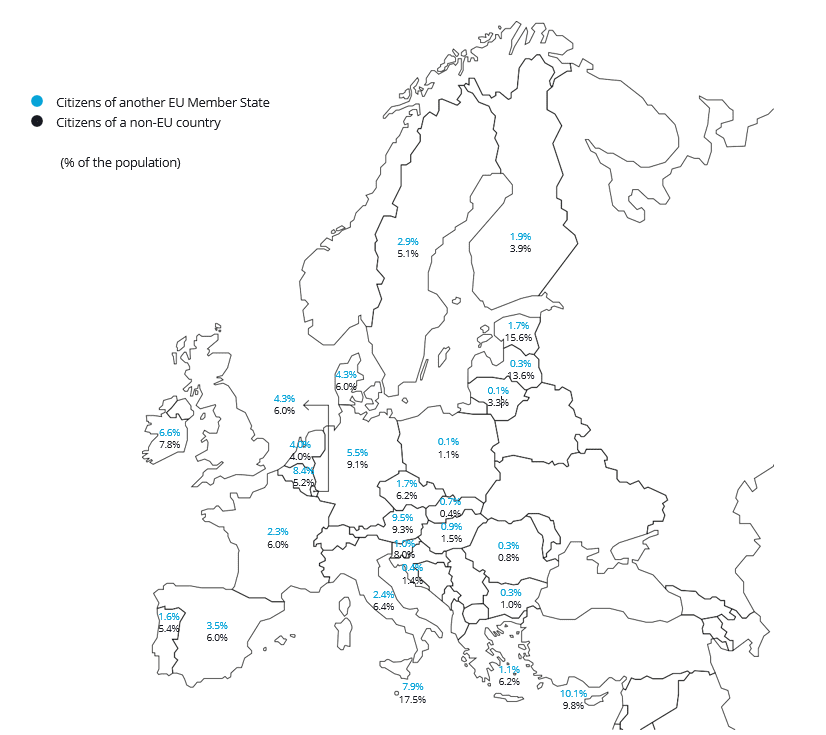
Furthermore, the outsourcing of border protection can in some cases lead to the infringement of European countries’ own sovereignty. In November 2019, Malta entered into a maritime cooperation agreement with General Khalifa Haftar, who controls the eastern half of Libya. The Maltese side encourages the Libyan coast guards to continue their activities even beyond their own territorial waters and within those of Malta, so the ‘dirty work’ is in practice carried out by Libyan militias on the territory of the EU. In July 2023, 250 illegal immigrants were escorted back from Maltese waters in this way.13
Outsourced Dirty Work?
While Europe is enacting increasingly strict legislation to make immigration more difficult at the nation-state level, it continues to communicate an image of openness, and likes to present itself as a ‘humanitarian superpower’. Restrictions are presented by decision-makers as reforms that will ultimately facilitate entry, effectively sending letters of invitation not only to regular but also to irregular migrants. This Janus-faced communication strategy is a significant driver of migration. Moreover, migrants who have already entered Europe typically engage in successful communication on social media, conveying to those at home an image of a fulfilled ‘European dream’, while keeping silent about the darker side. The desire to migrate is increasing, and this increasing pressure means that the ‘gatekeeper regimes’ are forced to do the dirty work by increasingly brutal means.
Human Rights Watch (HRW) reports that Turkish border guards often fire live ammunition at those trying to cross the Syrian border illegally.14 Algeria, which has received hundreds of millions of euros in aid from Brussels in the past decade under various legal guises, transported 13,000 sub-Saharan migrants between 2017 and 2018, and 6,000 in 2019, including women and children, to its southern borders, where they were left to fend for themselves without food and water in the more than 40-degree heat. According to IOM data, nearly 2,000 people have lost their lives trekking to safety, but the practice continues to this day.15 In July 2023, Tunisian authorities rounded up hundreds of Africans in the city of Sfax and transported them to the empty desert at the Libyan border, where they abandoned them.16 Although many human rights organizations voiced their concerns after the above cases, neither the EU nor European governments made any official response.
‘The desire to migrate is increasing, and this increasing pressure means that the ‘‘gatekeeper regimes’’ are forced to do the dirty work by increasingly brutal means’
The 600,000 sub-Saharan migrants in Libya are subject to regular abuse by both the authorities and regular citizens.17 Ships are often fired upon by the Coast Guard with live ammunition. On 7 July 2023, for example, the coast guard shot at a rescue ship of the NGO SOS Mediterranée.18 Nor do Africans who end up in reception centres in the western part of the country necessarily fare better. According to a UN report, murder, torture, sexual violence, and slavery are endemic in the centres.19 Under Libyan law, unregistered foreigners can be detained indefinitely, and under a law left over from the Gaddafi era, Libyan citizens can take illegal migrants out of prison for a set fee, put them to work, and keep them working without compensation.20 In 2017, CNN reported on the slave markets operating in the north-western part of the country, where locals bought and sold black Africans.21 The international press and organizations cannot reach the southern and eastern parts of the country, so one can only speculate about the conditions there.
It may not be possible to entirely eradicate the suffering of migrants, but it could certainly be mitigated to a great extent if Brussels were to communicate clearly on the topic of migration, and not indirectly encourage people to travel irregularly to Europe in hopes of a better life.
Worst Practices: Relocation Mechanisms
The clearest examples of our failed pan-European migration management in recent years are the various—partially mandatory—relocation mechanisms. While EU member states have recognized the need for change in many areas, and that restrictions are needed after the comparatively open immigration and asylum policy seen in 2015–16, it seems that time has stood still when it comes to the ‘quotas’, which, under the rubric of ‘mandatory solidarity’, feature prominently in the New Pact on Migration and Asylum.
The various relocation mechanisms were originally devised by the EU as a means of relieving the burden on frontline countries, since according to the Dublin system, the member state on whose territory the asylum seeker first sets foot on European soil is responsible for conducting the asylum procedure. This places a disproportionately large burden on, for example, Italy and Greece. In response to this problem, in September 2015 the Commission developed the quota system, which was intended to encourage the even distribution of migrants reaching EU territory among member states. Thus, in September 2015, the Interior and Justice Council of the EU—despite opposition from the Czech Republic, Hungary, Romania, and Slovakia—decided in favour of the relocation of 120,000 asylum seekers (40,000 more than a previously accepted proposal), on a proportional basis to be determined by GDP, population, previously submitted asylum applications, and the unemployment rate.22
‘Any acceleration of deportations cannot be imagined without increasing cooperation with third countries’
The relocation mechanism achieved limited results: although the majority of member states officially supported it, much less enthusiasm was shown in actual implementation. According to the European Commission’s 2017 report, only 19,000 asylum seekers had been transferred to another member state, with another 6,000 procedures in progress. In other words, even taken together, the two figures did not even reach 16 per cent of the planned total.23 And although Hungary and Slovakia lost the so- called ‘quota lawsuit’ they launched against the decree, they were ultimately not fined, due to the collapse of the relocation mechanism.
Voluntary attempts to distribute asylum seekers were no more successful. On 23 September 2019, in Valletta, the interior ministers of Italy, France, and Germany, together with Malta, which then held the rotating presidency of the EU, organized an informal meeting. The participants agreed to a joint statement of intent, enabling the transport of irregular migrants and asylum seekers rescued on the Central Mediterranean route to alternative countries, but nothing came of it in the end in terms of practical application.24 In 2020, in response to migration pressure on Greece, an action plan was developed by which, in addition to the provision of expert and financial support, a relocation mechanism was to be introduced. This would have primarily enabled the transfer of unaccompanied minors, persons granted international protection, and irregular migrants meeting other criteria of vulnerability. In the end, sixteen countries, including thirteen EU member states, joined the voluntary mechanism, but the results were rather modest: 5,000 asylum seekers were relocated within the framework of the mechanism, which received 35 million euros in funding, meaning a direct cost of 7,000 euros per person—and this sum covered only the relocation itself, not the procedure as a whole. What is more, given that the annual average of asylum applications in the EU varies between 500,000 and one million, this did not represent a meaningful solution.25
We should also mention the French initiative, which prioritized gradualism in handling migration. Instead of a full-scale negotiation of the New Pact on Migration and Asylum, it focused on more measurable and achievable goals. Accordingly, accompanied by serious debates, the Declaration of Solidarity, which aimed to relocate 10,000 asylum seekers per year. However, only 435 people have been relocated within the framework of this agreement, which is also voluntary.26
All these examples clearly show that European relocation mechanisms raise serious sovereignty issues, while failing to work in practice. Not least because, thanks to freedom of movement within the Schengen Zone, the majority of resettled persons quickly move from an undesired host state to their own preferred destination country—often even before relocation, when they are informed that the relocation procedure will not take them to the desired country.27
Despite all this, elements related to so-called ‘mandatory solidarity’ are a prominent part of the Pact. Essentially, what this means is that a member state can pay money instead of receiving asylum seekers28—which, according to preliminary calculations, would be the not insignificant sum of 20,000 euros per person.29 The pact envisages 30,000 relocations per year, which could rise in the event of another migration crisis. As a third element, frontline states can request the financing of joint capacity-building projects from member states that do not want to accept asylum seekers, but the framework for this is rather vague. In other words, the distribution of asylum seekers—which has failed time and again in recent years—is still a prominent part of the solution in the eyes of the EU decision-makers, thereby preserving existing problems and sending a sufficiently ambiguous message to future migrants to encourage them to set out, since many of them at least will definitely enter the EU.
The Achilles Heel of the Asylum System: Repatriations
One of the biggest challenges for the EU+30 concerns the deportation of asylum seekers who are not entitled to international protection. In 2022, 39 per cent of asylum seekers were entitled to some form of international protection, meaning that the majority were essentially ‘economic migrants’.31 However, the vast majority of these were not repatriated: in 2022, fewer than 25 per cent of the 422,400 rejected asylum seekers actually left the EU. What this means in practice is that more than 80 per cent of people who reach the EU and apply for asylum remain in EU territory. Today, this has even become something of an accepted norm, as is clearly indicated by the fact that, although there were 255,000 people in Germany in 2023 whose asylum applications were rejected, 205,000 of these were classified as ‘tolerated status’, meaning that coercive measures could not be used to repatriate them. Additionally, only 12,000 of the remaining 50,000 people were deported between 1 January and 30 September 2023,32 and this figure rose to only 16,430 by the end of the year. According to Federal Minister of the Interior Nancy Faeser, this was a major achievement, representing as it did a 27 per cent increase compared to 2021.33 However, the numbers indicate that a much more comprehensive change is needed. There is no deterrent in the system: those who set out on the journey know very well that there is only a negligible risk they will be deported.
This problem has arisen regularly in recent years, but no meaningful solution has been found—not least because any acceleration of deportations cannot be imagined without increasing cooperation with third countries. As we have seen, serious efforts in this direction have been made in previous years, but at the same time, the EU has been unable to decide what it wanted: while on the one hand it offered agreements to ‘gatekeeper’ countries, on the other it constantly criticized their domestic policy and human rights standards, which on occasion—as in the case of Tunisia—led to the collapse of the agreement. However, it is clear that bargaining of some sort is the only option here: neither issuing nor transit states have any interest in accepting migrants back. And for the time being, the EU does not want to hear about more drastic means of exerting pressure, such as the withholding of development subsidies. Consequently, although the principal goal of the Pact—to speed up repatriations and increase international cooperation—is to be welcomed, it is questionable whether it will be able to achieve any practical results.
It has already been suggested in several cases that the outsourcing of procedures would both reduce the administrative burdens (and costs) on member states, while also acting as a deterrent for those who embark on the journey solely for economic reasons. However, efforts at externalization have so far failed. Although it is not an EU member state, the UK is the European state that has gone furthest in this direction, with its asylum processing agreement with Rwanda. However, a case brought before the European Court of Human Rights means that no plane has as yet taken off for Kigali.34 The Italian–Albanian agreement, which concerns the preliminary processing of the asylum claims of those rescued in international waters, seems more promising. At the same time, within the provisions of the Pact, the legal framework whereby the asylum claim of anyone who reaches the territory of the EU must be processed here still seems unshakable.
Summary
A lot of water has flowed under the bridges of the Rhine and Danube since the peak of the migration crisis in 2015–16. It has become clear to European societies—and to an extent to politicians—that in addition to humanitarian considerations, irregular immigration has serious economic, social, and security consequences that cannot be swept under the carpet. However, instead of clear communication, the focus on the humanitarian angle can still be observed, even though statistics show that the majority of arrivals are not entitled to any kind of international protection. The same ambiguity can be seen in the New Pact on Migration and Asylum, which includes elements about securing borders, and others about keeping them open. Thus, in the absence of a clear position, many potential migrants—encouraged by the disinformation of people smugglers and the success stories of those who have already reached Europe—will continue to feel it is worth setting out on the journey, since the gates of the EU are still open.
Translated by Thomas Sneddon
NOTES
1 ‘Europe Faced Migration Resurgence from Africa in 2023’, Le Monde (10 January 2024), www.lemonde.fr/en/international/article/2024/01/10/europe-faced-migration-resurgence-from-africa-in-2023_6420639_4.html.
2 World Bank, ‘Sharp Deceleration Expected for Middle East and North Africa Economies in 2023’, worldbank.org (5 October 2023), www.worldbank.org/en/news/press-release/2023/10/05/sharp-deceleration-expected-for-middle-east-and-north-africa-economies-in-2023.
3 Arab Barometer, Public Views of Migration in MENA (July 2022), www.arabbarometer.org/wp-content/uploads/ABVII_Migration_Report-EN.pdf.
4 World Bank, ‘Afghanistan’s Contracted Economy Faces Uncertainty, Afghan Families Are Struggling’, worldbank.org (3 October 2023), www.worldbank.org/en/news/press-release/2023/10/03/afghanistan-s-contracted-economy-faces-uncertainty-afghan-families-are-struggling.
5 International Migration Institute, ‘Sharing the Dirty Job on the Southern Front? Italian–Libyan Relations on Migration and Their Impact on the European Union’, migrationinstitute.org (December 2010), www.migrationinstitute.org/publications/wp-29-10.
6 ‘Marco Minniti: The Man Who Cut the Migrant Flow to Italy’, BBC.com (20 September 2018), www.bbc.com/news/world-europe-45575763.
7 ‘Libyan Coast Guard Infiltrated by Criminals, Says EU Commissioner’, EUobserver (7 July 2023), https://euobserver.com/migration/157243.
8 ‘Italy Forges Pact on Gas, Migrants with Libya’, Euractiv (30 January 2023), www.euractiv.com/section/politics/news/italy-forges-pact-on-gas-migrants-with-libya/.
9 ‘Tunisia–EU Deal: Migration Should Be Considered under Broader Perspective’, Zawya (18 July 2023), www.zawya.com/en/economy/north-africa/tunisia-eu-deal-migration-should-be-considered-under-broader-perspective-w6pmvni5.
10 ‘Interview: Egypt Valuable EU Partner in Combatting Irregular Migration – Danish PM’, Ahram Online (21 March 2023), https://english.ahram.org.eg/NewsContent/1/1234/491984/Egypt/ForeignAffairs/INTERVIEW-Egypt-valuable-EU-partner-in-combatting-.aspx.
11 ‘Morocco Curbs Migration Attempts to Europe in 2023’, Infomigrants (24 January 2024), www.infomigrants.net/en/post/54740/morocco-curbs-migration-attempts-to-europe-in-2023.
12 ‘Ceuta: Spain Sends Troops as 8,000 Migrants Enter Enclave’, BBC.com (18 May 2021), www.bbc.com/news/world-europe-57156320.
13 ‘Malta Has Deal with Libya Coastguard over Migrant Interceptions: Report’, Reuters (10 November 2019), www.reuters.com/article/us-europe-migrants-malta-idUSKBN1XK0B7/.
14 ‘Turkish Troops Shooting Syrian Civilians along Border’, AP News.com (27 April 2023), https://apnews.com/article/turkey-syria-border-shooting-refugees-7a2fcbc48d61e67a95ab3c7583c345d2.
15 ‘Mass Deportations from Algeria to Niger, April to June 2022’, Alarmphone Sahara (27 June 2022), https://alarmephonesahara.info/en/blog/posts/mass-deportations-from-algeria-to-niger-april-to-june-2022.
16 ‘Tunisia Moves Hundreds of Migrants from Desolate Border Area’, Reuters (11 July 2023), www.reuters.com/world/africa/tunisia-moves-hundreds-migrants-desolate-border-area-2023-07-11.
17 ‘Libya’s Migrants and Crimes against Humanity’, Brookings (2 November 2021), www.brookings.edu/articles/libyas-migrants-and-crimes-against-humanity/.
18 ‘Libyan Coast Guard Fired Shots over Rescue Ship, Migrants, NGOs Say’, Infomigrants (27 March 2023), www.infomigrants.net/en/post/47767/libyan-coast-guard-fired-shots-over-rescue-ship-migrants-ngos-say.
19 Office of the United Nations High Commissioner for Human Rights, ‘Human Rights Council Hears that There Are Reasonable Grounds to Believe that Crimes against Humanity Have Been Committed against Libyans and Migrants throughout Libya…’, ohchr.org (April 2023), www.ohchr.org/en/news/2023/04/human-rights-council-hears-there-are-reasonable-grounds-believe-crimes-against.
20 Refworld, Immigration Detention in Libya (February 2015), https://webarchive.archive.unhcr.org/20230518080913/https://www.refworld.org/docid/5567387e4.html.
21 ‘People for Sale: Where Lives Are Auctioned for $400’, CNN World (15 November 2017), https://edition.cnn.com/2017/11/14/africa/libya-migrant-auctions/index.html.
22 European Commission, ‘Refugee Crisis – Q&A on Emergency Relocation’, 2015, https://ec.europa.eu/commission/presscorner/detail/en/MEMO_15_5698.
23 European Commission, ‘Report from the Commission to the European Parliament, Fifteenth Report on Relocation and Resettlement’, 2017. COM/2017/0465.
24 Sergio Carrera and Roberto Cortinovis, ‘The Malta Declaration on SAR and Relocation: A Predictable EU Solidarity Mechanism?’, ceps.eu (2019), www.ceps.eu/ceps-publications/the-maltadeclaration-on-sar-and-relocation/.
25 European Commission, ‘European Solidarity in Action: Over 5 000 Relocations from Greece’, 2022, https://home-affairs.ec.europa.eu/news/european-solidarity-action-over-5-000-relocations-greece-2022-10-12_en.
26 ‘Only 435 Asylum-seekers Have Been Relocated across the EU since June under a New Voluntary Scheme’, Euronews (8 February 2023), www.euronews.com/my-europe/2023/02/08/only-435-asylum-seekers-have-been-relocated-across-the-eu-since-juneunder-a-new-voluntary.
27 Andrew Connelly, ‘Failed EU Relocation Plan Leaves Refugees in Limbo’, The New Humanitarian (18 January 2016), www.thenewhumanitarian.org/report/102369/failed-eu-relocation-plan-leaves-refugees-limbo.
28 ‘Asylum and Migration: Deal for More Solidarity and Responsibility Sharing’, European Parliament News (20 December 2023), www.europarl.europa.eu/news/en/press-room/20231214IPR15929/asylum-and-migration-deal-for-more-solidarity-and-responsibility-sharing.
29 Council of the European Union, ‘Migration Policy: Council Reaches Agreement on Key Asylum and Migration Laws’, 8 June 2023, www.consilium.europa.eu/en/press/press-releases/2023/06/08/migration-policy-council-reaches-agreement-on-key-asylum-and-migration-laws/.
30 The EU, Iceland, Switzerland, and Norway.
31 European Union Agency for Asylum, ‘Recognition Rates at First Instance’, 2023, https://euaa.europa.eu/asylum-report-2023/41411-recognition-rates-first-instance.
32 ‘Germany: Cabinet Approves plan to Speed up Deportations’, Deutsche Welle (25 October 2023), www.dw.com/en/germany-cabinet-approves-plan-to-speed-up-deportations/a-67214147.
33 ‘German Lawmakers Pass Bill Seeking Faster Deportations’, Deutsche Welle (19 January 2024), www.dw.com/en/german-lawmakers-pass-bill-seeking-faster-deportations/a-68028050.
34 ‘European Court President Warns over Rwanda Rulings’, BBC.com (25 January 2024), www.bbc.com/news/uk-politics-68093940.
Related articles:


